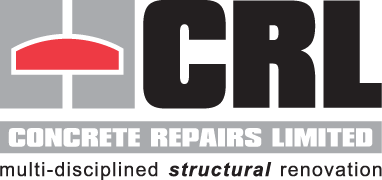Preparation is key to a long lasting repair
Like with anything in life, preparation is crucial to the success of what we do. If we don’t prepare and plan we can expect the endeavour to fail. This is no different when we are dealing with concrete repairs, or the application of coatings.
Cleaning and preparation on a repair contract can be broken down into 2 parts; preparation of the concrete substrate (this could be for the application of a protective coating, fairing coat, or mortar/repair concrete) and preparation of the reinforcing. Both are equally important in ensuring the success of the repairs, and/or coatings.
All repair and rehabilitation projects require some form of cleaning and preparation. There are 4 parts to this activity;
-
- Cleaning of the concrete surface (to be able to identify defects which were hidden by moss, algae, or coatings),
- Forming a perpendicular edge around the patch to prevent feather edging,
- Cleaning the reinforcing, and
- Breaking out the concrete behind the steel and inside the patch up to the perpendicular edge.
The cleaning of the concrete surface is normally carried out by high pressure cleaning at between 2000 and 3000 psi. Water jetting removes all the contaminants and roughens the surface via the impact of jets of high pressure. Varying pressures are used to obtain different surface profiles depending on the material to be applied to the concrete surface.
The forming of the perpendicular edge can be achieved by either saw cutting around the perimeter of the patch (ensuring that silica dust is kept to a minimum and the correct PPE is used), or if using hydro demolition, by precision cutting around the patch.
Cleaning of the reinforcing to SA2½ is usually done by grit blasting. This has the added advantage of producing a micro profile on the surface of the patch which assists in bonding the new repair material onto the parent concrete. Bear in mind though that it is not normaly required to clean the reinforcing to SA2½.
Lastly, the breaking out of any spalled, delaminating, cracked, or sub-standard concrete to behind the steel and inside the patch up to the perpendicular edge can be done using either hydro demolition, and/or mechanical means (electric or pneumatic).We do not recommend cosmetic repairs where the steel circumference is not fully exposed though this is sometimes specified. Good concrete repair practice requires breakout behind the bar to enable full cleaning and treatment and also to provide a physical key for the repair material.
Hydro demolition, which uses water at pressures of between 16,000 and 20,000 psi, is generally much easier on the environment, both from an acoustic and dust point of view. However, it does produce a fair amount of wastewater with a high PH which needs to be collected, filtered and treated before it can be discharged into normal storm water drains. Hydro demolition also provides a vibration-free solution, resulting in no damage or cracking to adjacent surfaces. At the same time it cleans the reinforcing to an acceptable level and leaves an excellent micro profile on the inside of the patch for the new repair material to bond onto. From a H&S perspective, hydro demolition has a low reaction force and almost zero HAV’s risk.
Mechanical breaking out is still a widely accepted means of preparing the concrete patches for repair, and is generally used where the patches are small, there is not a large quantity of patches and water would cause a problem. HAV has been a problem in the past and is still an issue with mechanical breaking out that needs to be considered and dealt with. However, the equipment used nowadays has come a long way and the vibration magnitudes of the new breakers are so low that when coupled with exposure time produce relatively low exposure values.
CRL, with over 65 years' experience in concrete remediation are well qualified and experienced to carry out all cleaning and preparation works on the projects it undertakes. We have carried out studies, and are involved in various groups investigating noise, silica and vibration. This helps us understand the problems associated with these activities and deal with/risk assess the likely exposures before a project begins.
DOWNLOAD THE ALL PARTY PARLIMENTARY GROUP REPORT ON SILICA DUST








